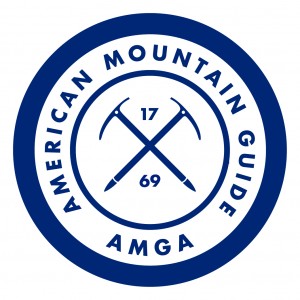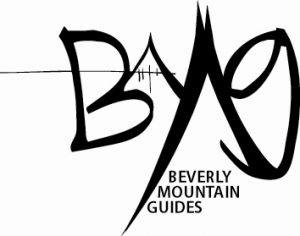Ice Mixed Climbing Grades
ICE MIXED GRADES
Grades have since become a contentious issue. Here’s my take:
Since Jeff Lowe set the first proper mixed rock and ice climb in Vail, Colorado, “Octopussy”, and was given the grade of M8 (mixed 8), people climbed “like” routes and the grades were similar. Then Will Gadd and Ben Firth, et al., established the Cineplex at Panther Falls, Canada, showcasing “Musashi”, and graded it M12. Many other climbs were put up in between and after these classics were established. Soon, many climbs were put up in the more severe and overhanging fashion. The two grades, and the variance of rock type and general ice conditions, gave rise to an intrepid variability in grades.
Enter Europe. All the while, the same grades were being put up in France, Switzerland, Italy, and beyond. What nobody saw coming was Usine, a massive cave near Grenoble, France that lent itself to no standard rock climbing whatsoever. So, some industrious men made it a canvas for the next phase, Dry Tool Style (DTS), climbing primarily manufactured routes on extremely overhanging terrain, and without the use of what is known as a Figure 4, but that’s another topic concerning style. The holds were painted so that climber to tell where they were going draws pre-hung and permanent, and a grading system that is not relevant to the rest of the world. Moreover, there’s no ice.
I brought the concept back from Europe and hooked up with Jason Nelson in Ouray. He took me to see a climb that he put up on the outside of a cave that nobody would climb because it was a “dry cave”, devoid of ice. His route followed natural and already existing holds for ice tools. I asked him about the rest of the cave and he said it likely wouldn’t “go”. I suggested that we mimic the French and MAKE IT GO. I started bolting from ground, up, “Zero2Hero”, right up the middle of the cave. Jason finished the top of the route, we cleaned it and we climbed it, and it is now the standard line at the Hall of Justice, although most people only climb to the lip of the cave and claim the ascent. The rating was dubious, but we said M12-/M11+ (ice does com in above the cave), and D10 to the lip. More routes have gone in since.
Now, everyone who climbs this medium knows that grades are subjective, and at this point, there is no agreement or consensus, not only considering the different rock types, but also the conditions that they were climbed in. Holds break, bad holds become better, freeze-thaw inside the stone exfoliates the rock face. Suffice it to say that routes change.
What is more notable is that since Usine, ratings have taken another form. I would say that if people want a rating for places with heavy dry tooling concentration to ice ratio, there might be a before Usine (BU) and an after Usine (AU) rating. An M10 standard like “Goldline” in Ouray’s Poser’s Lounge is simply 2 grades easier than an M10 at Usine. People can then be happy that they climbed “Goldline” and claim an M10 ascent, but it should use the BU note (BUM10).
Perhaps a better solution is to simply not have a global rating at all. Erin Weber suggested that perhaps each crag should be standardized to only itself. The grade of the crag is based around a centralized “classic” for the crag, there’s always one. Then all other climbs are rated with a +1, +2 or -1, -2 system. For example, “Zero2Hero” would be the Hall of Justice’s “standard”. “Pull the Trigger, Tigger”, would simply be a “-1” meaning it’s a grade easier than “Zero2Hero”. Magneto Effect gets a “0”, Wonder Woman gets a “-2” and so on. I think it’s a great idea. There’s less people touting a grade that’s pretty much irrelevant anywhere else. If someone puts up an M13, it is likely be downgraded, and people might get their feathers ruffled since things like ego, sponsorship, and reputation are on the line.
I was training with Markus Bendler at his home in Austria a couple of years ago. He showed me a video of a route he put up. The crux was a dead horizontal, full-extension, blind throw, out an overhang to a lip the size and width and depth of a dime. Then, he controlled the egress. He said his success on this route was about 10%. He graded the climb M12. There are only a handful of climbers in the world that would be able to do this move, let alone the route, and nobody is likely to on-sight this climb, ever. I thought to myself, “M12, eh? Sounds like a Todd Skinner sandbag for sure. I can’t wait to get on his M9 route.” Well, I did, and it was for sure, harder then “Goldline”.
So, don’t believe the hype. It’s better to get your mind wrapped around setting your goals to climb something fun rather than for the grade. Next time I see someone put M14, or M18, or M-whatever, I’ll be skeptical of the grade and how it relates to the normal distribution curve of all mixed or dry tool style climbs. I see the mixed grades going the way of the am radio, it still exists and it has its place, but we’re listening to Internet radio now. The evolution of ice climbing continues The more I climb mixed lines around the world, the more I know it’s just all about giving my best effort and battling doubts and fears while on a route, not a grade.
In the end, it’s perhaps as I’ve heard before, a route can be easy, hard, or not yet possible.




